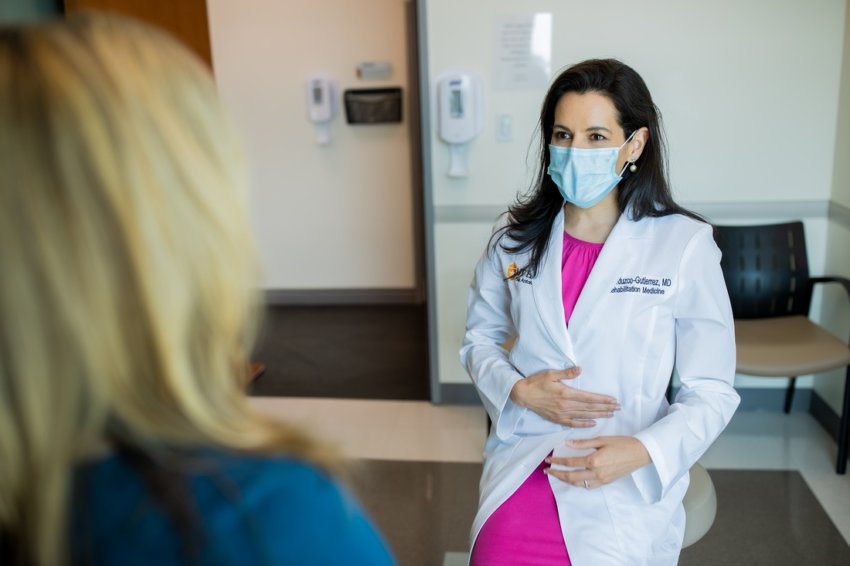May is National Stroke Awareness Month — the perfect time to remind us of the F-A-S-T way to detect a stroke:
- FACE drooping
- ARM weakness
- SPEECH difficulty
- TIME to call 911
Time lost is brain lost, so if you or a loved one think a stroke has occurred, seek help FAST.
Monica Verduzco-Gutierrez, MD, professor and chairwoman of the Department of Rehabilitation Medicine at UT Health San Antonio, answered some questions recently about stroke.
No matter how often you tell them, some people still don’t seek help quickly enough, do they?
That’s right. People may experience stroke symptoms and then, because of fear, fail to seek help as early as they should. That’s been true during the pandemic, especially. People try to blow off their symptoms. By doing so, they may miss the short time window during which clot-busting therapy with tissue plasminogen activator (tPA) is effective. In other cases, a stroke occurs during sleep and a medical center has to ascertain, from the damage, when the stroke occurred.
From the rehabilitation perspective, what is the result of waiting?
That means the effects of their stroke will be worse. They will have to live with the sequelae of the stroke afterwards. That is where rehab professionals take care of these patients long term.
Why is movement restricted in stroke patients?
A good percentage of patients, with time, develop spasticity. It can cause pain and inability to do therapy, make caregiving difficult, and leave the patient without use of the affected arm and leg. Spasticity has a lot of negative consequences.
What is spasticity?
Spasticity is increased muscle tone caused by abnormal signaling between the brain, nerves and muscles. Before a stroke, the body has a good balance, with the brain, nervous system and muscles working together to control movement. But once there is damage in the brain from a stroke, that balance is thrown off. The brain now sends too many signals to the muscles and doesn’t receive enough feedback. Excessive firing makes the muscles tight, which is also called muscle overactivity or spasticity. One goal of therapy is to quiet these responses.
How is spasticity treated?
One mode of therapy is botulinum toxins. Botox is an associated brand name. Although these toxins are well known for cosmetic use, physical medicine and rehabilitation physicians (also called physiatrists) treated spastic muscles with these toxins for 20-plus years before their first use for cosmetic purposes.
When botulinum toxin is injected into a muscle, it acts as a “smart medicine,” because it finds the neuromuscular junction where the nerve meets the muscle. It then blocks the release of acetylcholines, which are hormones at the nerve ending that make the muscle spastic. This paralyzes the muscle temporarily.
Are there ways to retrain muscles?
Neuromuscular re-education is repetitive task training geared to increasing function. It works best in combination with stretching and electrical stimulation of affected muscles. It is very important to understand that what begins in the hospital or clinic must be carried over at home. Family members and caregivers are essential to this process.
Success sometimes depends on whether stroke survivors are seen long term by a rehabilitation physician and team. If they are, then it’s more likely that they’ll get treatment. Otherwise, they may not. They may be left alone to deal with disability and spasticity. If they see a physiatrist, who can use interventional treatments to take care of them, their recovery can look a lot different.
In the field of post-stroke care, we work as a team. I collaborate with neurologists, physical therapists, occupational therapists and sometimes social workers, all joining together to help the patient. If a stroke is not fatal, then there is life left to be lived. A life after stroke is possible. Many courageous individuals have proven this over and over again.


